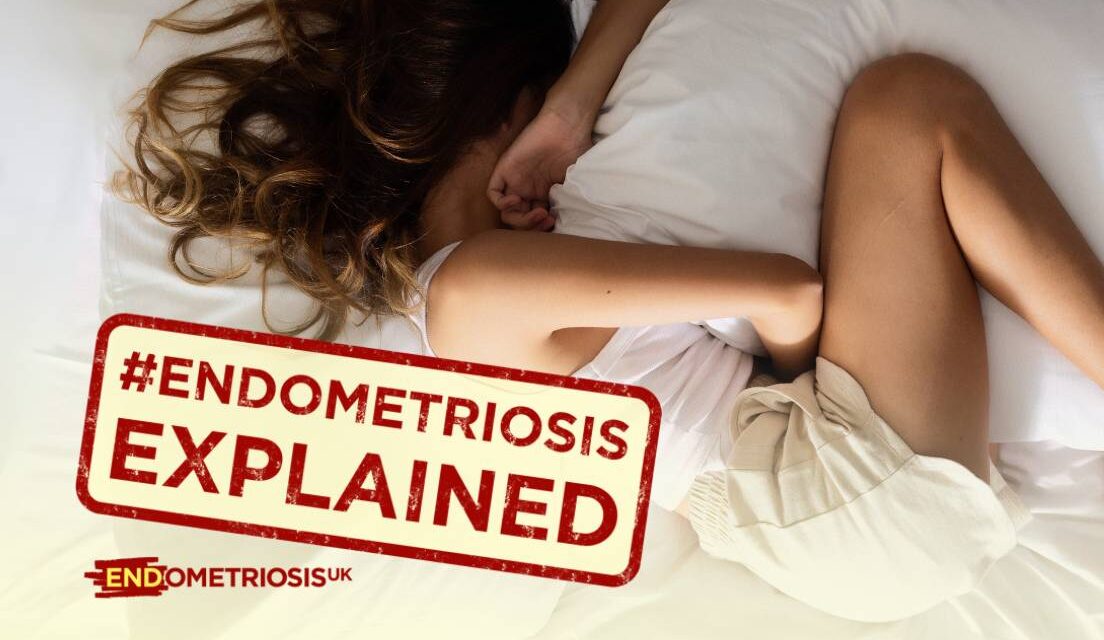Endometriosis is a reproductive health condition that affects 1 in 10 women and some trans and non-binary people. That’s nearly 29,000 people in East Sussex!
It’s painful, exhausting, can interfere with daily life and in some cases can lead to infertility. But aside from that, how much do you know about it?
As the theme of this year’s Endometriosis Action Month is #EndometriosisExplained, let’s do some myth busting. I asked the YES team to share what they do (and don’t) know about it. I have endometriosis myself and their questions helped me pull together some explanations which I hope will be helpful.
Endometriosis is…
“…a pain in the gut! 😫”
High levels of pain, particularly when you are on your period, is the most well-known sign that endometriosis could be present – but not the only one. Abdominal pain is also symptomatic of many other things so it’s best to speak to your GP if you are experiencing this so they can properly discuss your concerns.
Read my tips on how I manage my own endometriosis pain.
“…something I don’t know much about”
In a nutshell, endometriosis is a chronic condition related to menstruation where tissue similar to the lining of the uterus grows in other parts of the body. Most often that is elsewhere in the abdomen such as on the ovaries or bladder, but in rare cases has also been found growing near the lungs, heart or even the brain.
As mentioned above it can cause extremely high levels of pain, particularly during menstruation when it sheds in the same way as the uterine lining does. Other symptoms include heavy or irregular periods, bloating, fertility issues or even bowel problems depending on the areas affected.
Visit the NHS website for more information and a full list of known endometriosis symptoms.
“…difficult to pronounce”
You’re not wrong! If you break it down phonetically it’s: en-doh-me-tree-oh-sis, which quite a mouthful – but is sometimes, unofficially, shortened to ‘endo’. 
“…complicated”
There’s certainly no ‘one size fits all’ for who gets what symptoms, where it grows, or how it’s treated. Which leads us nicely to the next one…
“…underdiagnosed”
Unfortunately, this is very much the case. Currently diagnosis takes an average of 8 years and 10 months, but experiences vary greatly from person to person as much as the symptoms do. The only conclusive way to diagnose endometriosis is through a surgical procedure called a laparoscopy, and because many of the symptoms are very similar to other common conditions it is important to explore those as well before operating. During the procedure, which is done under general anaesthetic, a small camera is inserted into the abdomen through an incision in the bellybutton so the surgeon can take a look at the area. If they find any endometriosis during the surgery they will usually treat it at the same time by burning, cutting or lasering away the affected areas.
Another huge contributing factor to the length of diagnosis is the stigma or embarrassment that people feel around discussing gynaecological concerns, which is why it is so important to talk about it, normalise it and in the process raise awareness.
While we’re talking about the importance of gynaecological health, check out our tips on what to expect at your next cervical screening.
“…exhausting”
One thing that it is very easy to forget is that being in pain is tiring. Fatigue is a common symptom of endometriosis and with fatigue comes brain fog, and brain fog makes even the simplest of tasks feel impossible. Go easy on yourself if it’s something you suffer from ❤️.
“…inconvenient and expensive”
Endometriosis pain can strike any time of the month, not just during your period, so it’s a good idea to keep your preferred pain relief method close at hand.
In addition to the inconvenience of pain roulette, the price of sanitary products can sting – especially when those who suffer from endometriosis typically go through more of them than the average person.
If paying for period products is something you struggle with, East Sussex Libraries have a period bank scheme where anyone can pop by and collect a range of products for free, no questions asked. Find out more about using or donating to Period Bank.
“…possibly something that affects me?”
If you are worried that you could have endometriosis the first thing to do is discuss your concerns with your GP. They will not be able to diagnose you there and then, but they can offer treatments to help with symptoms and recommend next steps. Arm yourself with as much information about the condition as you can, and you can always take a trusted friend, partner or relative with you to your appointment if you are nervous.
Your GP will ask you questions about your symptoms so it can be useful to have a list with you if you are worried you could forget to mention something. It’s also a great way to remember any questions you may want to ask.
Endometriosis UK have a downloadable pain and symptoms diary that can help you keep track and remember everything.
To find out more about getting diagnosed, visit the Endometriosis UK website to download their information pack.





